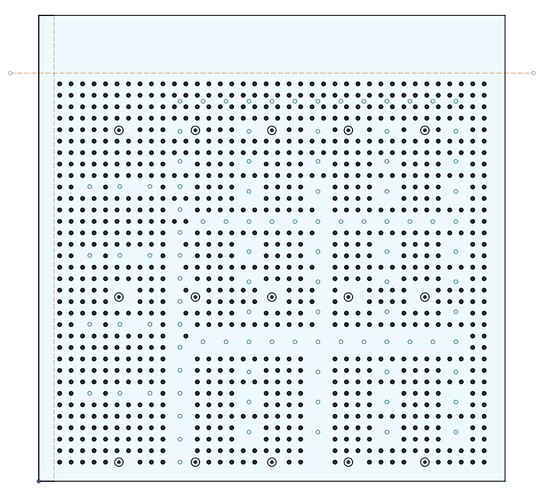I originally made a jig for a work piece, but it turns out that it won’t work for my purposes. I decided to go all out and make a vacuum table instead. The plan is to use a combination of vacuum and dowel pins (and maybe some double sided woodworkers tape) to keep the workpiece in place.
Instead of making a small vacuum table for my work piece, I decided to make something that fits almost the entire table of my HDM - 18 x 24". If I pull it off, it’ll let me machine four pieces together, reducing the number of tool changes, etc.
The table uses 5mm holes for the vacuum. There are about 1,000 such holes. They are split into eight different zones, which are each connected to high pressure hose. The eight hoses eventually come together via splitters into one large 1 ¼" hose, which is then stepped up to my 4" dust collection hose. The dust collector also goes to the HDM for dust collection. If there isn’t enough vacuum generated since it is also dust collecting, I can always connect it to my shop vac.
The vacuum table will be directly bolted to the CNC table (see images - those are the 15 large holes). I see the HDM uses M6 bolts, so I’ll machine these just a bit larger than 6 mm diameter (6.1?).
The aluminum plate is 24 x 18 and 0.5" thick. I’ll machine eight zones for vacuum under it to go to the 5mm holes in the zone. The channel for this will be about ¼" thick, and the open area under the 5mm vacuum holes will be as long / wide as it needs to be, but also about ¼" open. Under the ½" plate will be a much thinner 0.1" aluminum plate to close up the channels and prevent leaks. On top of the vacuum table will be ⅛ or ¼ inch plywood for the spoil board. All three of these will be bolted together, and directly to the CNC table.
I have some questions!
- Are the 5mm holes enough to generate the vacuum? Each work piece will have about 200 such holes under it.
- Any comments on the eight separate zones? They are all independently valved, so I can shut off zones not being used.
- Is the ¼" channel for each zone too small? Am I going to run into poor airflow issues with this?
- Can I use some silicone between the bottom aluminum plate and top aluminum plate to help with sealing? Should I use a thin rubber layer instead?
- Any tips from the experts on machining this behemoth on the HDM?
Thanks!
